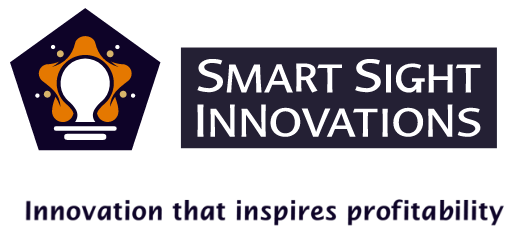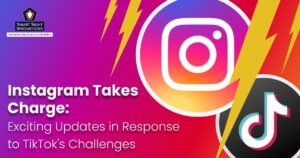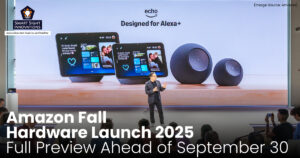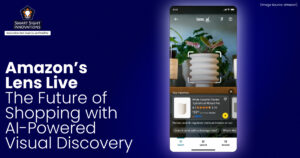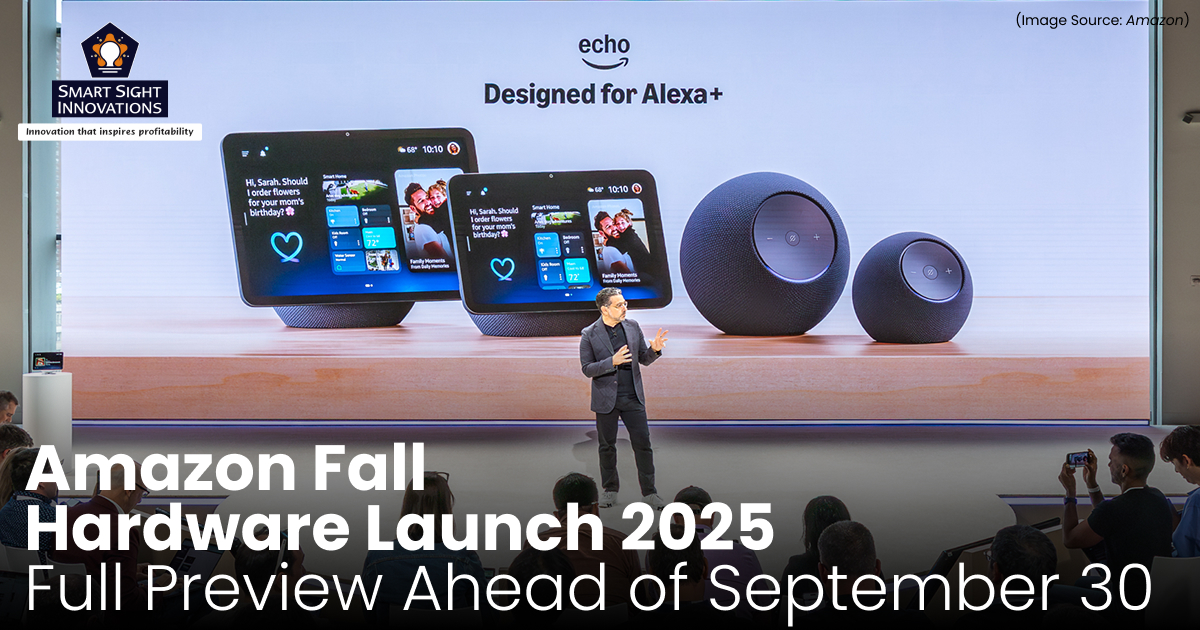
Amazon is gearing up for one of its most anticipated showcases of the year. On September 30, 2025, the company will host its annual Fall Hardware Event in New York City, under its Devices and Services division. The presentation, which begins at 10:00 AM ET, is expected to spotlight a wave of new gadgets and upgrades across the Kindle, Echo, Fire TV, and smart home ecosystem. With Panos Panay, the former Microsoft executive now leading Amazon’s hardware strategy, and CEO Andy Jassy hinting at “beautiful new hardware,” anticipation is running high.
This event marks a significant moment for Amazon, not only because of the hardware it may unveil but also because it signals the company’s broader vision for how AI, Alexa, and connected devices will shape the future of the home.
A Return to the Big Stage

(Image Source: Amazon)
For years, Amazon’s hardware rollouts followed a quieter rhythm, often with smaller, scattered announcements instead of one large showcase. This fall marks a shift, as Amazon’s return to a full-scale stage event signals fresh confidence in the strength of its hardware division.
In recent years, much of the attention has been on Alexa’s software evolution, particularly the launch of Alexa Plus, Amazon’s AI-enhanced assistant. Now, the focus shifts back to the tangible devices that will carry Alexa into homes, offices, and daily routines. The September event is expected to bridge these two priorities, pairing smarter, more conversational software with more powerful and attractive hardware.
The Alexa+ Era

(Image Source: Amazon)
At the heart of the showcase will likely be Echo smart speakers and displays, redesigned to harness Alexa Plus. Amazon has invested heavily in making Alexa more natural, context-aware, and capable of handling complex queries. New Echo hardware could highlight faster responses, on-device AI processing, and better integration across Amazon’s ecosystem.
Industry watchers expect refreshed Echo Shows with sharper displays and upgraded audio, alongside the possibility of a revamped Echo Studio for immersive, spatial sound. Echo Buds may also get a boost, potentially adding smarter noise cancellation and deeper Alexa integration.
For Amazon, the Echo line has always been about more than just hardware, it’s about reinforcing Alexa as the central node of the smart home. September’s event may mark the moment when Alexa Plus finally moves from promise to daily reality.
Kindle

(Image Source: Amazon)
The Kindle remains one of Amazon’s most iconic products. Though its evolution has been gradual, speculation points to this year’s event unveiling a major leap, a color E-ink Kindle.
A color Kindle would represent the most significant leap for the device in over a decade. Imagine children’s books, magazines, and illustrations rendered in vibrant detail while still preserving the glare-free, battery-efficient qualities of E-ink displays. Analysts also point to possible upgrades in stylus functionality, building on the Kindle Scribe’s success but expanding it to more models.
Even if the hardware evolution is modest, Amazon is expected to highlight how AI and cloud services could deepen the Kindle experience, from smarter library management to more intuitive note-taking.
Fire TV, Fire Tablets, and Entertainment
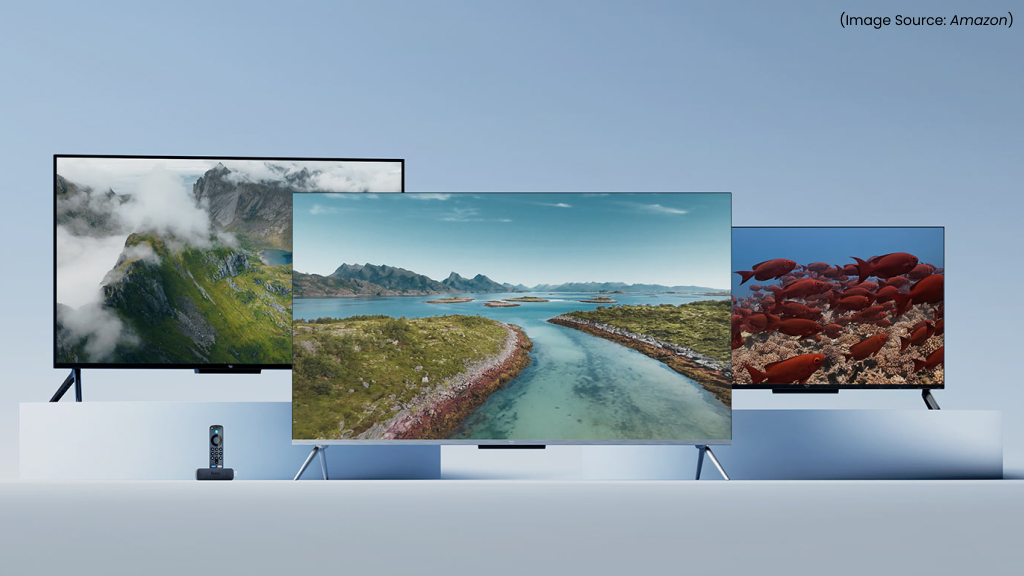
(Image Source: Amazon)
Entertainment remains another key pillar, with Fire TV devices, including sticks and smart TVs, are due for updates. The company has been steadily improving picture quality, voice search, and AI-powered recommendations. Expect tighter integration with Alexa Plus, enabling users to find shows, control smart home devices, or even shop directly through conversational prompts on the big screen.
Fire Tablets, though less central to Amazon’s strategy than Echo or Kindle, may also see modest refreshes. While these updates are likely incremental, Amazon could use them to showcase how Alexa Plus functions across multiple form factors.
Smart Home, Ring, and Eero
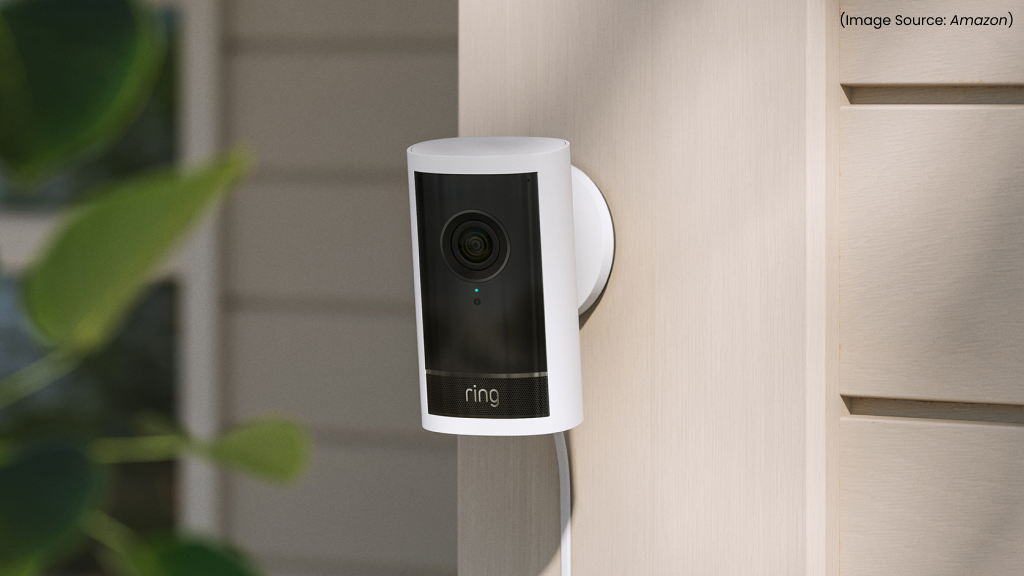
(Image Source: Amazon)
Amazon’s smart home brands, Ring, Blink, and Eero, have become household staples in security and connectivity. The September 30 event is expected to bring updates in this space as well. New Ring and Blink devices could feature enhanced AI-driven motion detection and smarter integrations with Alexa routines. Eero routers might see performance improvements, making them better suited for the demands of connected homes filled with Echo speakers, Fire TVs, and IoT gadgets.
Beyond the expected, Amazon has a history of unveiling surprising experiments—products like the Astro home robot or Echo Frames smart glasses. While not all of these experiments succeed, they demonstrate Amazon’s willingness to test bold ideas. This fall, the company may once again tease something unexpected.
Andy Jassy’s Vision
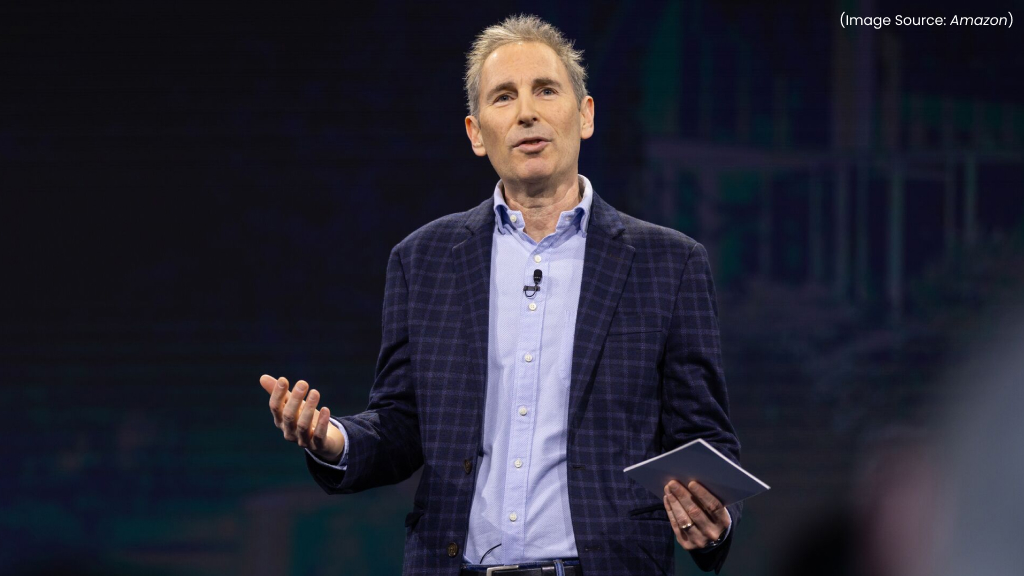
(Image Source: Amazon)
Amazon’s CEO, Andy Jassy, has provided important clues about the company’s direction. He has promised that Amazon will release “beautiful new hardware” this fall, signaling that design and user experience are top priorities. That phrasing suggests that the new lineup won’t just be functional, it will also emphasize aesthetics and premium appeal.
Jassy has also been outspoken about the role of AI in shaping Amazon’s future. Earlier this year, he emphasized that virtually every customer experience will be reinvented with AI. This belief underpins Alexa Plus and the hardware designed to support it.
By embedding generative AI and conversational intelligence into Echo, Fire, and Kindle devices, Amazon is betting that customers will increasingly rely on its ecosystem not only for entertainment or reading, but for everyday decision-making.
Jassy has also emphasized the need for speed and agility, cutting down on bureaucracy inside Amazon to accelerate innovation. This cultural shift could explain why Amazon is once again holding a major stage event, presenting itself as a faster-moving, design-forward hardware player.
Competitive Landscape

The timing is pivotal for Amazon, as competitors such as Apple, Google, and Meta are rapidly advancing in AI-powered hardware. Apple’s HomePod, Google’s Nest Hub, and Meta’s smart glasses all highlight the race to own the future of the smart home and personal AI.
If Amazon can deliver on its promises, it could reassert Alexa as the leading assistant, especially at a time when voice assistants risk becoming overshadowed by chatbots and multimodal AI platforms. However, if the hardware disappoints or Alexa Plus feels undercooked, Amazon could face renewed skepticism.
While the hype is high, it’s worth noting that not everything may appear at this event. A full Fire Tablet overhaul is less likely, and some of the more experimental ideas, such as AR or new robotics, could be teased but not immediately available. Global rollout also remains a question: Amazon’s hardware launches often start in the U.S., with delayed or limited availability in other regions.
Why This Event Matters
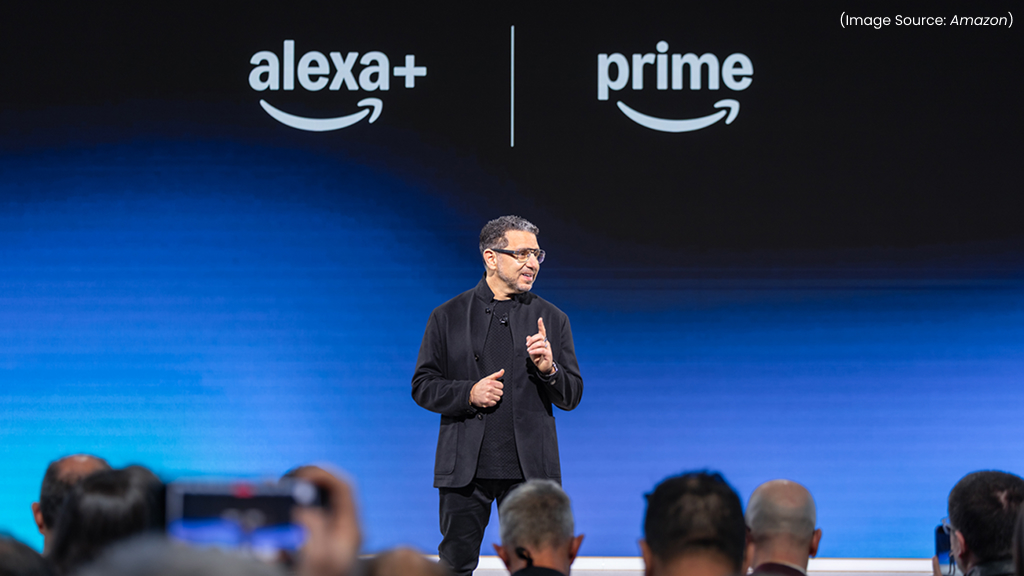
(Image Source: Amazon)
At its core, Amazon’s Fall Hardware Event is about more than just gadgets. It’s about Amazon’s future identity. The company has always been defined by scale, vast retail, vast cloud infrastructure, but Jassy’s vision increasingly leans on AI-driven customer experiences.
By pairing Alexa Plus with attractive, well-designed hardware, Amazon is signaling that it wants to be the leader in the AI-powered smart home and digital lifestyle. September 30 will be the moment to see whether that ambition can be backed up with products that delight users.
As Amazon takes the stage in New York, the stakes are high. Customers, competitors, and industry analysts will all be watching to see how the company balances innovation with execution. New Echo speakers, a possible color Kindle, Fire TV upgrades, and smart home improvements are all on the horizon, but the bigger question is how seamlessly these devices integrate with Alexa Plus and Amazon’s AI-first vision.
